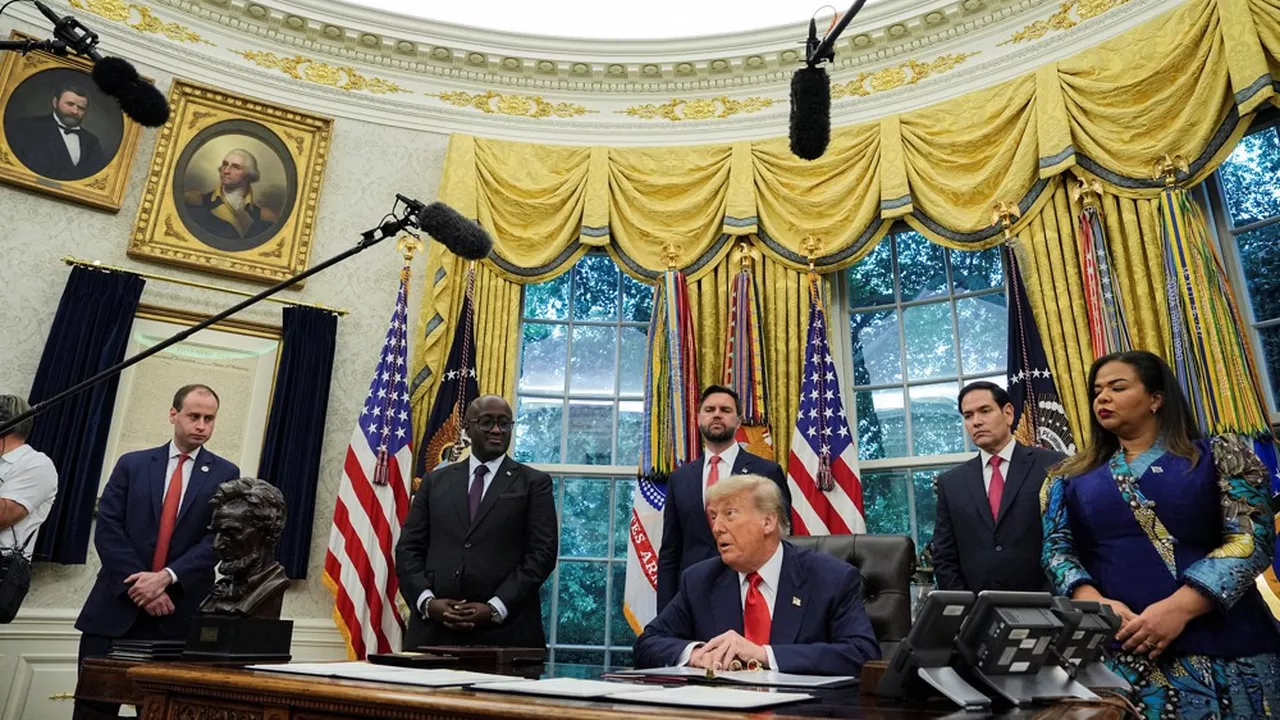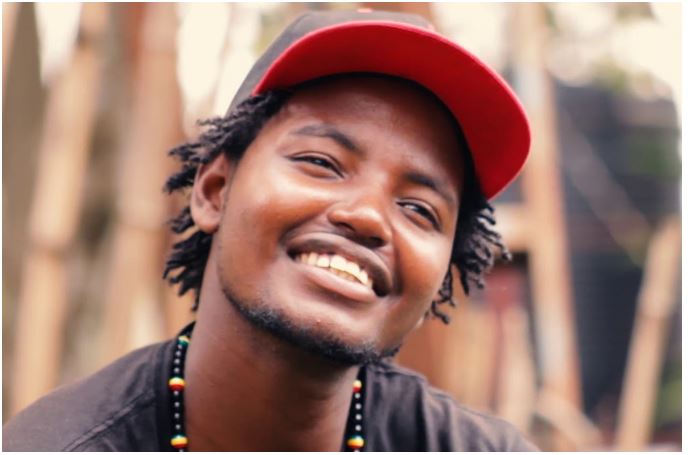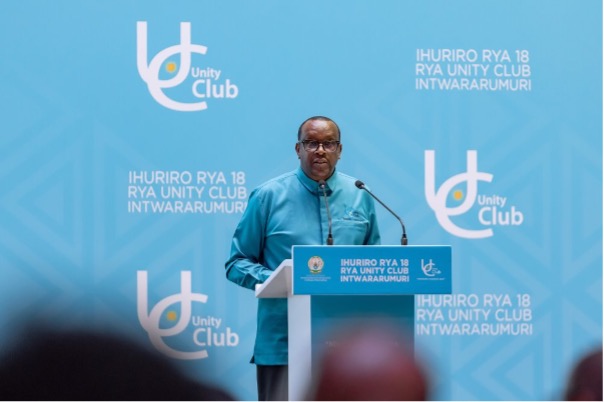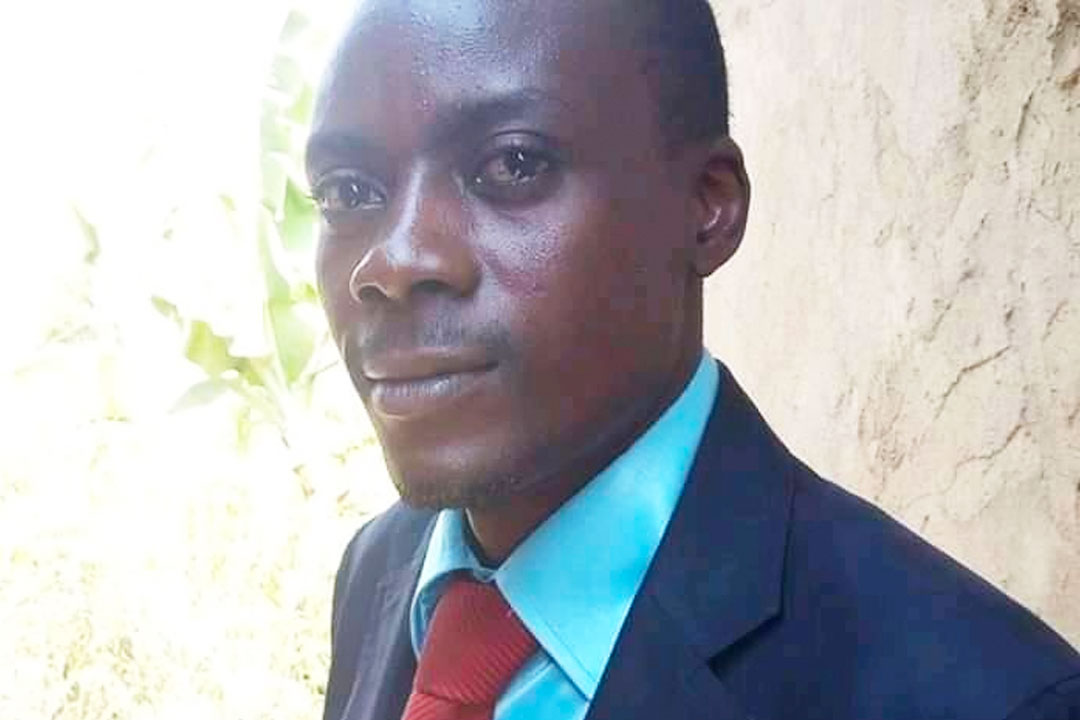When the Democratic Republic of Congo and Rwanda signed the Washington Peace Agreement in June 2025 under U.S. auspices, many hailed it as a diplomatic breakthrough — the first framework in decades placing American leadership at the heart of Great Lakes stabilization. The accord promised a dual track: the withdrawal of Rwandan forces and proxies from eastern Congo, and the neutralization of the FDLR as part of a broader peace and refugee-return process.
Four months later, implementation has stalled. Timelines have slipped, fighting has resumed, and the core ambiguity of the agreement — how to “neutralize” a movement embedded in the lives of nearly half a million Rwandan refugees — now threatens to derail the entire process.
Policy circles in Washington and across the region continue to view “neutralization” as a purely military problem calling for a military solution. Yet attempting to eliminate a politico-military movement rooted in the grievances and survival strategies of a refugee population — and in the political and social fractures of eastern Congo — would not only be ineffective, but dangerously counterproductive. It risks fracturing Congolese national cohesion, deepening humanitarian suffering, and handing the strategic initiative back to Kigali, whose forces and proxies have profited from instability for three decades.
Washington must now recognize that the only viable path is political, not kinetic — and use its leverage to make that political path possible.
Why the Military Option Against the FDLR Cannot Work — and Why It Is Counterproductive
Four factors make a military “solution” futile.
First, the humanitarian and political costs would be immediate. A military offensive against the FDLR would trigger massive new displacements, invite reprisals, and worsen an already catastrophic humanitarian situation. Human rights organizations have documented repeated attacks on villages in Rutshuru, Masisi, Binza, and Nyiragongo, where civilians have borne the brunt of M23 and allied operations. Extending the violence to these rural zones would only increase suffering and push any political settlement further out of reach.
Second, the FDLR are not an isolated fighting force. They are, historically and socially, the armed expression of a large population of Rwandan refugees and of Congolese communities who fear persecution and exclusion. One cannot “destroy” a military phenomenon rooted in a civilian population without destroying that population’s sense of security — and without generating new recruits, reprisals, and displacement.
This is why decades of operations — Umoja Wetu, Kimia II, Amani Leo, and others — have failed. Even after the killing of commander Sylvestre Mudacumura in 2019 and subsequent leadership losses in 2023, the movement endured. Its resilience stems from social embeddedness, not military strength. A war of attrition against a social base is not a solution; it is a conflict amplifier.
Third, a heavy-handed campaign would destabilize the fragile balance between the FARDC, local self-defense groups, and communities in the east. Many Wazalendo view the FDLR as part of a protection network against M23 and RDF abuses. If the FARDC were to target FDLR units operating alongside these communities, it would alienate essential local allies, weaken Kinshasa’s defensive posture, and inadvertently strengthen M23 and its Rwandan backers. The 2024–2025 escalations have already shown how operations detached from local political realities can backfire disastrously.
Fourth, the geography of the conflict makes Kigali’s demands self-contradictory. The zones historically associated with the FDLR — Rutshuru, Kiwanja, Masisi, and Nyiragongo — are now largely under the control of the M23 and, by extension, the Rwandan Defense Forces. These territories also host the largest concentrations of Rwandan refugees who have lived there since 1994 — the same communities from which many current FDLR members originate. In practice, Kigali is asking Kinshasa to “neutralize” forces located in areas already occupied and administered by its own army and proxies. By occupying and militarizing these refugee heartlands, Kigali blurs the line between civilians and combatants, transforming zones of refuge into zones of targeting. This contradiction is deliberate: by demanding that Kinshasa neutralize forces positioned in territories under Rwandan influence, Kigali ensures it can later blame any failure on Congolese non-compliance. The goal is not security, but to keep Kinshasa politically weakened, militarily constrained, and diplomatically discredited.
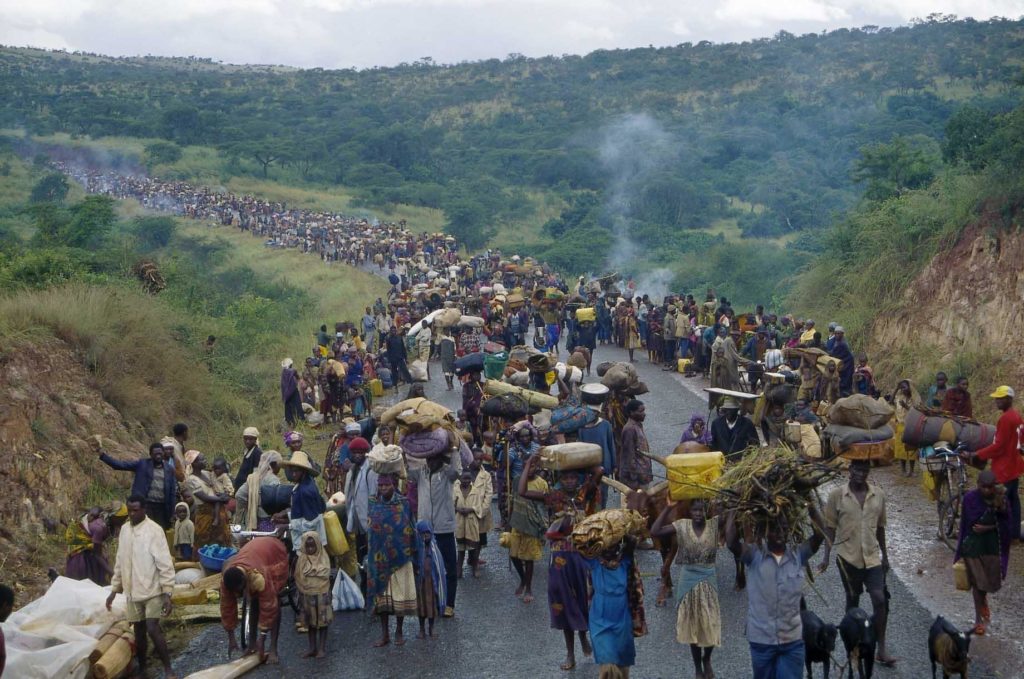
The Missing Refugee Pillar
The Rwandan refugee crisis is not a byproduct of the Great Lakes conflict — it is its origin. Four months after the Washington Accord, this fundamental dimension — the true engine of instability — remains ignored. UNHCR registers about 200,000 Rwandan refugees in the DRC, but the real number, including the unregistered, the stateless, and those living under false identities, likely exceeds half a million.
This is not a secondary issue; it is the central fault line of Central Africa’s instability. The arrival, between 1994 and 1996, of hundreds of thousands of refugees fleeing the Rwandan Patriotic Front’s advance triggered the region’s first great humanitarian catastrophe. Their presence in eastern Congo became — depending on perspective — either a reason or a pretext for Rwanda’s 1996 invasion, which unleashed the First Congo War and led to Mobutu’s fall. The refugee question was again central to the Second Congo War in 1998. Since then, every crisis and every war in the region has, in one way or another, led back to this unresolved issue.
It is therefore not a humanitarian footnote, nor a dossier to be outsourced to Kigali’s narrative. Rwanda’s claim that it can “solve” the refugee issue through forced repatriations coordinated with the M23 is both illusory and dangerous. This is a root cause of regional instability — one that can only be resolved through a political settlement grounded in justice and genuine reconciliation.
Yet politically, these refugees remain invisible, and even humanitarians have largely ignored their plight. For years, UN and NGO reports have documented targeted massacres and persecution — acts that, in some cases, may amount to crimes against humanity or even genocide — without any structured international response.
The massacres currently unfolding in Rutshuru, Masisi, Binza, and neighboring territories continue this tragic pattern. In recent weeks, hundreds of Hutu civilians — including long-settled Rwandan refugees — have been executed in deliberate attacks by M23–AFC units supported by the Rwandan Defense Forces. Investigators from the UN and NGOs such as Human Rights Watch and Amnesty International have documented these killings and the systematic destruction of Hutu villages. Far from isolated incidents, these atrocities extend a thirty-year continuum of targeted violence against Hutu communities in eastern Congo — a pattern detailed in the UN Mapping Report of 2010. Their recurrence, selectivity, and impunity reveal an organized strategy of ethnic cleansing and, increasingly, genocidal intent. Yet despite this well-documented record, the international response remains timid — as if acknowledging these victims would disrupt the dominant narrative.
How can a population so central to the history of this conflict remain so absent from its solutions?
For three decades, repatriation attempts have failed because the root causes inside Rwanda remain unchanged: lack of personal security, judicial guarantees, political recognition, social reintegration, and economic opportunity. Every wave of forced or coerced return has only deepened mistrust and discredited the institutions meant to protect refugees. Those who fear persecution inevitably seek to defend themselves — and it is precisely the existence of such self-defense structures that Kigali then cites as proof of an “existential threat,” justifying new incursions and proxy wars in eastern Congo.
The result is a self-perpetuating cycle: fear breeds militias, militias justify invasions, and invasions create new refugees. Breaking this cycle requires more than military operations or demobilization plans. It requires a political opening centered on protection, guaranteeing a voluntary and rights-based return under credible international supervision. Without that, any military or diplomatic framework — however sophisticated — will only reproduce the instability it claims to solve.
The Misbranding of the FDLR: When Narrative Replaces Facts
The current perception of the FDLR is guided more by political narrative than by fact. The label of “genocidal group” has never been legally established or consistently applied. The International Criminal Tribunal for Rwanda (ICTR) never indicted the current FDLR leadership for genocide. Among roughly 500 officers of the former Rwandan Armed Forces (FAR), only a handful were convicted, while several were acquitted.
It is crucial to distinguish the FDLR as an organization from the individuals who compose it. While a minority once served in the former Rwandan army, most current members joined after 1994 and have no link to the events of that period. Among the former FAR officers still active, many have never been accused of any crime, including Victor Byiringiro, the FDLR’s current president, and General Omega, commander of its military branch, FOCA (Forces Combattantes Abacunguzi). Many other ex-FAR were integrated into the Rwandan army after 1994.
Paradoxically, Kigali itself has integrated numerous former FAR and ex-FDLR figures into senior positions within its government, the Ministry of Defense, and national security institutions. If affiliation with the FAR were proof of genocidal ideology, such appointments would be indefensible. The “no dialogue with génocidaires” doctrine, so often repeated abroad, collapses under the regime’s own pragmatic choices.
UN experts have also documented that Rwanda has incorporated former FDLR members within troops it deploys in the DRC — reportedly several hundred — due to their knowledge of the terrain. This directly contradicts Kigali’s official rhetoric.
These contradictions call for a factual reassessment of the FDLR’s role and nature within the peace process — an essential step toward lasting regional stability.
The roots of this mischaracterization trace back to a defining episode: the March 1999 killing of eight Western tourists in Uganda’s Bwindi Forest. The attack, immediately blamed on the Armée de Libération du Rwanda (ALiR), the FDLR’s precursor, was used to justify the first U.S. sanctions. Later investigations and testimony exposed deep inconsistencies. Former Rwandan intelligence officer Aloys Ruyenzi testified that the operation had been orchestrated by RPF agents disguised as rebels — a false-flag designed to reinforce Rwanda’s narrative of “Hutu terrorist militias” and secure Western support for its Congo campaigns. Years later, a U.S. federal court annulled the key confessions in the Bwindi case, ruling they had been extracted under torture. That episode birthed a powerful narrative weapon — one Kigali has refined ever since.
Two decades later, the “security threat” argument no longer holds. The FDLR have not carried out a cross-border attack against Rwanda in over twenty years. Their presence today is defensive, concentrated in remote rural zones where they often coexist with local communities. UN monitoring reports confirm that they lack the logistics, manpower, and ambition to pose any real threat. Yet Kigali continues to invoke their specter to justify incursions and to sustain a war economy built on illicit resource extraction.
The false equivalence between the FDLR and the M23 further distorts reality. The M23 is a heavily armed proxy force, financed, directed, and supplied by the Rwandan Defense Forces. It controls urban centers and strategic trade corridors. The FDLR, by contrast, are modestly equipped and rooted in refugee communities, with no political, ideological, or territorial ambitions in the DRC. Past operations that treated both as equivalent threats caused massive civilian displacement without resolving anything. Repeating that mistake today would undermine the fragile equilibrium sustaining the Washington framework.
This manipulation of the FDLR narrative is not peripheral — it is the core of Kigali’s regional strategy and has long shaped Washington’s perception of the conflict. By internalizing Rwanda’s narrative of perpetual threat, the United States has often aligned with Kigali’s tactical objectives rather than with the pursuit of durable regional stability. The paradox is now clear: the FDLR are not an ideological enemy but a strategic pretext — a narrative instrument used to legitimize Rwanda’s prolonged military and economic presence in the DRC.
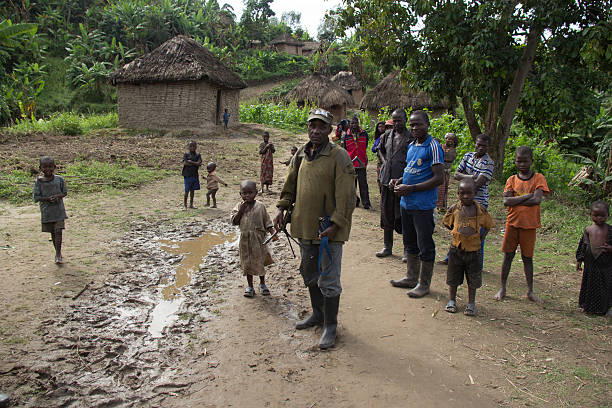
Kigali’s Trap
Kigali knows that the total annihilation of the FDLR is impossible — and that is precisely why it demands it. Behind the rhetoric of “neutralization” lies a deliberate strategy that has kept eastern Congo burning for thirty years.
The logic is simple: by pushing Kinshasa to “neutralize” the FDLR, Rwanda drives the Congolese government into three traps — dismantling its alliances with local Wazalendo militias; waging an unwinnable campaign whose failure Kigali can exploit as a pretext for “re-intervention”; and maintaining an endless war that guarantees Rwanda’s continued presence, influence, and extraction routes within Congolese territory.
For three decades, the Rwandan Defense Forces have never fully withdrawn from eastern Congo. Despite their superior logistics, intelligence capabilities, and Western training and support, they have not “neutralized” the FDLR — because the problem is political, not military. The FDLR cannot be eradicated by bombs; they are the outgrowth of a refugee population rooted in communities repeatedly targeted by Rwandan proxies. Kigali controls cities through the M23, but it has never subdued the rural heartland where these populations live, remember, and resist.
Today’s FDLR are not remnants of a 1994-era army; they are largely young men born and raised in the DRC — sons of those same persecuted communities — an organic offshoot of populations victimized for decades simply for who they are.
The pattern is circular and perverse: M23 and RDF units justify operations by labeling entire communities as “FDLR” or “FDLR supporters.” Abuses follow, fear spreads, and communities arm themselves or align with local defense groups — which Kigali then cites as new evidence of an “existential threat.” Violence thus creates its own justification. Rwanda’s objective is not security, but leverage. Each new wave of conflict offers a new pretext — another “corridor,” another “operation,” another reason to stay. By portraying the FDLR as an existential threat, Kigali secures diplomatic cover to intervene freely in Congo while presenting itself as a stabilizer rather than the destabilizer it is.
Most dangerously, Rwanda’s definition of “threat” keeps expanding. Once the FDLR are weakened or politically neutralized, Kigali will inevitably target the Wazalendo militias — many of them Congolese Hutu — branding them “genocidal.” This rhetorical inflation ensures that no Hutu civilian or armed group can ever be considered legitimate, perpetuating Kigali’s permanent right of interference.
This dynamic cannot be broken by force. Only a political framework that addresses the refugee issue at its root — with credible guarantees of safety, rights, and return — can end the cycle Rwanda has sustained for decades.
Building Peace Through Dialogue: A Political Roadmap for Real Security and Lasting Stability
If the military path is a trap, the alternative is clear: a protection-centered political roadmap linking disarmament to credible guarantees of return, rights, and reintegration. Only such alignment of incentives can offer fighters a rational exit, refugees a dignified return, and Rwanda the security assurances it claims to seek.
This process should begin with a Joint Rwandan Refugee Dialogue Mechanism, under the joint auspices of the UN and the African Union, coordinated by the United States with regional partners and international facilitators such as Qatar. This mechanism must be neutral and inclusive — engaging refugees from the DRC, neighboring countries, and the diaspora in Europe and the Americas — and mandated to develop a Return and Protection Framework with a clear timeline for institutional, legal, and security reforms in Rwanda.
Kigali must commit to dated and verifiable confidence-building measures: credible guarantees of safe return under international supervision; adoption of an amnesty law; a verified end to forced returns and cross-border harassment; and the opening of civic and political space. Legal recognition and integration of actors and organizations emerging from the refugee community into Rwanda’s political life are essential — as is the release of individuals imprisoned for peaceful political activity. Equally vital is one freedom: the right of all victims of crimes committed since 1990 — in both Rwanda and the DRC — to testify publicly without being criminalized as so-called “genocide deniers.” Without truth, reconciliation is an illusion.
Disarmament must follow trust — never precede it. Only once political guarantees, legal safeguards, and international monitoring are in place can disarmament be credible. In this context, demobilization should be understood not as surrender but as integration within a negotiated political framework.
A pragmatic path could begin with temporary cantonment under international supervision, followed by lawful reintegration through transparent vetting and professional reinsertion. Reintegration should also provide opportunities for responsibility within the army and civilian institutions, so that returning refugees feel genuinely represented within Rwanda’s security and political apparatus. To reassure refugees, refugee-led coordination committees across eastern Congo should manage information, registration, and local dialogue, with technical support from neutral international partners. Given UNHCR’s loss of credibility among Rwandan refugees, it should play a technical and logistical role rather than a political one, within a broader international framework.
If these conditions are met — credible guarantees of return, genuine political opening, and verified implementation — then disarmament becomes a path to peace rather than an act of capitulation. It would grant the Rwandan refugee politico-military movement a negotiated transition, refugees a renewed sense of security and citizenship, and Rwanda the durable stability it claims to seek.
Finally, the process must be enforceable and verifiable. Integrating it within the Washington framework, conditioning aid on measurable progress, and establishing an independent verification mechanism under a UN Security Council mandate would ensure compliance. Without verification and consequences, no agreement can last.
For Washington, this is not charity but strategy. A political settlement that restores stability, enables lawful trade, and strengthens regional sovereignty would exemplify pragmatic diplomacy based on strength, accountability, and mutual respect. But for such a framework to succeed, the Rwandan leadership must face real consequences for non-compliance. As long as Kigali maintains absolute internal control and a perception of military superiority, it will treat diplomacy as optional. The balance of incentives must shift: the regime must understand that failure to honor its commitments could undermine its international legitimacy, strategic partnerships, and ultimately, its hold on power.
Only sustained diplomatic and economic pressure can make cooperation a necessity rather than a choice. Beyond peacebuilding, such stability protects U.S. strategic interests by securing long-term access to critical minerals essential to the global economy — a core objective in the Trump administration’s renewed competition with major powers. Preventing regional fragility and conflict from disrupting these supply chains is not merely a moral imperative, but a strategic necessity.
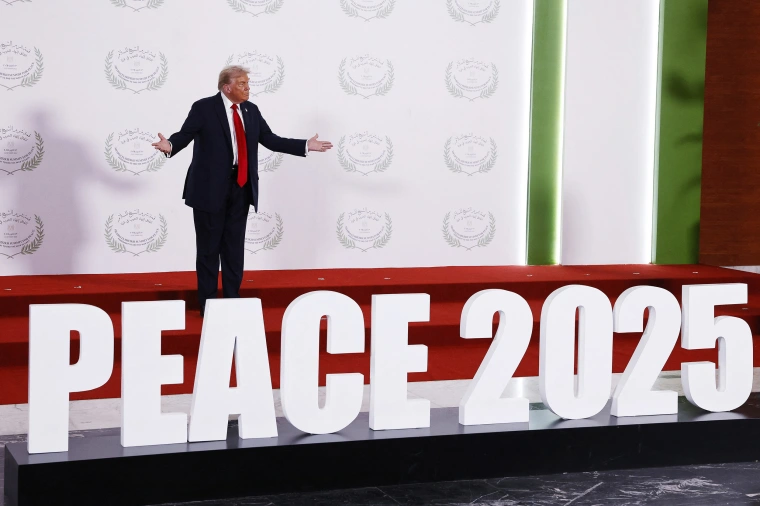
Breaking Kigali’s Narrative Trap: A U.S. Path to Real Peace in the Great Lakes
The Washington Peace Framework represented a breakthrough of intent — a testament to renewed U.S. leadership and strategic diplomacy. Yet in its current form, it risks entrenching the very instability it sought to end. By elevating “neutralization” without anchoring it in a credible process of refugee return, protection, and political reform, it inadvertently strengthens Kigali’s leverage and weakens Kinshasa’s hand.
It is time to move beyond the narrative trap that Kigali has so effectively built. For years, Rwanda has sold its own definition of “security” to the international community — presenting itself as a stabilizer while exporting instability. Its strategy is methodical, disciplined, and commercially pragmatic. To follow that logic uncritically is to prolong Rwanda’s war, not to build the peace that President Trump calls for — and that the region urgently needs.
The United States holds the decisive cards. It can recalibrate the process — not by abandoning firmness toward armed groups, but by redefining “neutralization” as a political outcome: verified disarmament, voluntary repatriation, and lawful political inclusion under third-party guarantees. Such a shift would deprive Rwanda of its justification for a permanent military presence, prevent Kinshasa from self-defeating campaigns, and position Washington at the center of a durable, verifiable peace.
In practice, many international actors — the United States among them — still view Rwanda as a convenient security partner and a logistical gateway to the region’s strategic minerals. This reliance, while understandable in the context of global competition, risks perpetuating instability by shielding Kigali from accountability. A more pluralistic and inclusive Rwanda — one less centered on a single power structure and more open to internal diversity and political competition — would ultimately become a more stable, predictable, and peaceful regional partner. Such an evolution would serve not only Rwanda’s citizens and its neighbors, but also the long-term interests of global powers that claim to seek genuine stability in Central Africa.
Norman Ishimwe SINAMENYE
www.jambonews.net

